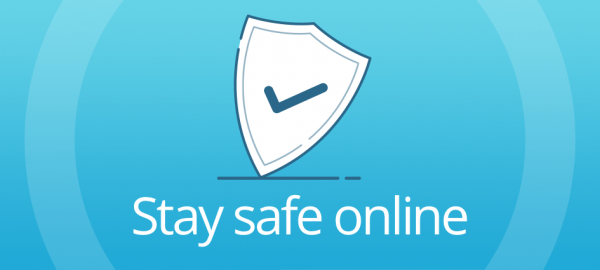“I only share my personal details on websites I trust.” – Sound like you? Can you tell if a site is trustworthy?
Online shopping is so quick and convenient, it’s easy to see why it’s so popular – you simply choose what you want, click to buy and store your payment details for future purchases. Although it’s hassle-free, falling victim to a scam or data theft is a real possibility so it’s important to recognise a suspicious site when you see one.
Here are some quick tips to help you protect your personal information and stay safe online:
Look for HTTPS
HTTPS is found in the URL of the website you’re on, e.g. https://register365.com, and will often display a padlock symbol. If you see this, it’s good news – the website is taking extra care to keep your data safe by encrypting any personal information you submit using an SSL Certificate. If a website only shows HTTP, e.g. http://register365.com, it has no added security in place to protect you.
So, the next time you’re shopping, keep an eye on the address bar and have a look around the website. You may notice the SSL Certificate only appears on product pages or during the payment process as these are the areas where extra security is needed.
Check for a privacy statement
Worried about how trustworthy a website is? Check if there’s a privacy statement – you should be able to find it easily on most retailers’ sites, it’s usually at the bottom of the page. It should state how the business collects, uses and protects your sensitive data. If you can’t find a privacy statement, keep an eye out for other security features that indicate the website is genuine.
Verify a trust seal
If you see an icon with ‘Secure’ or ‘Trusted’ on the homepage, it’s likely a trust seal. These indicate the website has HTTPS protection and additional features from a security partner like SiteLock.
These extra security features include regular malware scans, automatic malware removal and protection against malicious behaviour. Click the trust seal to see if it takes you to a verification page. If so, this confirms the site is secure and functioning as it should.
Check the contact details
A trusted website will always display their contact details (postal address, telephone number, email address, company registration number, VAT number). Take a look at the ‘About us’ page, if these are not clearly shown in the footer of the website.
Are you uncertain? Grab the postal address and stick it into Google – does it look genuine?
Still not convinced? Give the telephone number a call – how the operator answers will tell you all you need to know about the company – do you trust them?
Look for bad grammar
A good website will take pride in itself – graphics are sharp, spelling and grammar are on point and the entire website looks and feels polished.
If the copy doesn’t make sense, is contradicting or there are lots of errors – be careful! Granted, everyone makes mistakes, even big companies, but where mistakes are too many, it’s best to stay away.
With these quick top tips, we hope you know what to look for to stay safe online and enjoy a safer shopping experience!

